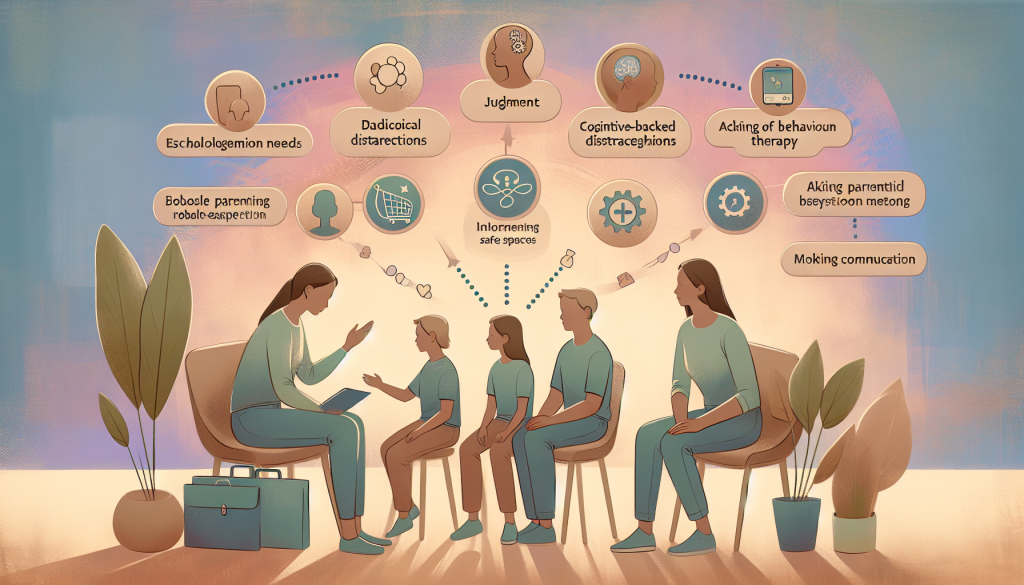“`html
Effective Communication with Teenagers
By Child Mind
Introduction: Why Communication with Teenagers Matters
Communicating effectively with teenagers is one of the most significant yet challenging aspects of parenting. Adolescence is a time of rapid growth, change, and self-discovery, often accompanied by mood swings, rebellion, and misunderstandings. As parents, it’s essential to foster open and meaningful communication to build trust, provide support, and guide teenagers through this transformative period.
In this article, we’ll explore the principles of effective communication, discuss some common challenges parents face, and provide practical recommendations to improve your connection with your teenager. Whether you’re a seasoned parent or preparing for the adolescent years, these insights can help you strengthen your relationship with your child.
Main Points: Understanding Teenagers and Improving Communication
The Psychological Needs of Teenagers
Adolescents are navigating a critical stage of development, both cognitively and emotionally. According to research, teenagers have psychological needs such as:
- Autonomy: Teenagers want to feel they have control over their lives and decisions.
- Self-expression: They need to express their thoughts, feelings, and individuality without fear of judgment.
- Safety and security: Despite their desire for independence, they still need to feel safe and supported.
Understanding these needs can help parents approach conversations with greater empathy and patience. For example, rather than dismissing a teenager’s opinions as immature or irrational, actively listen and validate their feelings while gently guiding them toward constructive solutions.
Barriers to Communication
Some common barriers to effective communication with teenagers include:
- Judgment: Teens may shut down if they feel judged or criticized.
- Lack of time: Busy schedules can prevent meaningful conversations.
- Misinterpretation: Teenagers may misread your intentions or tone, leading to miscommunication.
- Digital distractions: Social media and technology can detract from face-to-face interactions.
By identifying these barriers, parents can take steps to create a more supportive and open environment for communication.
The Role of Cognitive Behavioral Therapy (CBT) Principles
Cognitive Behavioral Therapy (CBT) offers valuable insights into improving parent-teen communication. CBT emphasizes the connection between thoughts, emotions, and behaviors. For example:
- Active listening: Focus on understanding your teenager’s perspective without immediately reacting or interrupting.
- Reframing negative thoughts: Help your teen reframe unhelpful thoughts into more positive or realistic ones. For instance, instead of “I’ll never be good at math,” encourage them to say, “I can improve with practice.”
- Problem-solving: Collaborate with your teen to address challenges and develop solutions, fostering their sense of autonomy and competence.
Practical Recommendations for Parents
1. Create a Safe Space for Communication
Ensure that your teen feels comfortable talking to you without fear of judgment or punishment. Use non-verbal cues like nodding and maintaining eye contact to show you’re engaged in the conversation. Avoid interrupting or offering solutions immediately—sometimes, they just need to vent.
2. Be Available and Present
Make time for one-on-one interactions with your teenager, even during busy days. Put away phones and other distractions during conversations to show that they have your full attention. Quality time can strengthen your bond and create opportunities for deeper discussions.
3. Ask Open-Ended Questions
Instead of asking questions that can be answered with a simple “yes” or “no,” try open-ended questions like:
- “What was the best part of your day?”
- “How are you feeling about your upcoming exam?”
- “What do you think about [specific topic]?”
These questions encourage your teen to share more and can lead to richer, more meaningful conversations.
4. Acknowledge and Validate Their Feelings
When your teenager expresses emotions, acknowledge their feelings without dismissing or minimizing them. For example, if your teen says they’re stressed about school, respond with empathy: “I can see that you’re feeling overwhelmed. How can I support you?”
5. Set Boundaries While Respecting Their Autonomy
While it’s important to enforce rules and boundaries, involve your teenager in setting them. This approach fosters mutual respect and gives them a sense of control. For example, you might say, “Let’s agree on a curfew that works for both of us.”
6. Model Healthy Communication
Your actions speak louder than words. By modeling healthy communication—using respectful language, staying calm during disagreements, and apologizing when necessary—you teach your teen how to handle conflicts and express themselves constructively.
Conclusion: Building Stronger Connections
Effective communication with teenagers takes time, patience, and practice, but the rewards are worth the effort. By understanding your teen’s psychological needs, addressing barriers to communication, and applying practical strategies, you can build a stronger, more trusting relationship with your child.
Remember, the goal isn’t to have perfect conversations but to create an environment where your teen feels heard, respected, and supported. With consistent effort, you can help your teenager navigate the challenges of adolescence while fostering a deeper connection that lasts a lifetime.
For more parenting tips and resources, explore our other articles on the Child Mind website.
“`

